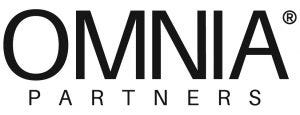
Omnia Partners
Natural Disaster Prep: A Step-by-Step Cleaning Guide to Reopen QuicklyNatural Disaster Prep: A Step-by-Step Cleaning Guide to Reopen Quickly
Natural Disaster Prep: A Step-by-Step Cleaning Guide to Reopen Quickly
April 24, 2024

While winter and snowstorms are behind us, it’s time to start prepping for the next season of natural disasters: hurricane and tornado season. A natural disaster can strike at any time without much warning so it’s better to be prepared ahead of time and make sure your organization has an emergency plan in place to limit the damage and speed up the cleanup process.
When thinking about disaster cleanup, most people think about building restoration and water damage. But what about cleaning and sanitation of facilities? Contaminated water can be a health concern for employees and customers and can even delay reopening businesses. This is why having the proper chemicals and equipment in stock and ready to go is essential to your disaster preparation checklist. Keep reading for recommendations on what to sanitize and steps to take for a speedy recovery, brought to you by Diversey, a leading partner in quality cleaning and hygiene solutions.
What to Clean & Sanitize
Proper cleaning and hygiene are critical to protecting the health and safety of employees, customers and your community. To ensure maximum cleanliness, you should focus on two general categories: your facility and your equipment.
Cleaning Facilities
Surfaces like walls, floors, ceilings and drains need to be cleaned as do shelving, restrooms, sinks and lighting fixtures. If your institution was spared from serious damage due to flooding, there may be less of a need to focus on walls and ceilings and more need to focus on cleaning debris. Your facility’s heating, ventilation and air conditioning (HVAC) system may also need to be cleaned prior to reopening. Cleaning an HVAC system is a job that is best left to professionals. Consider contacting a local HVAC company to help with cleaning this important part of your building.
Cleaning Equipment
Equipment includes all the tools you need to run your business. These items range from simple things like maintenance tools, linens and carts to complex equipment like laundry machines, kitchen equipment and medical equipment. Getting these items clean, disinfected or sanitized is vital to getting you operational again.
3 Steps to Cleaning Up for a Swift Reopening
Before starting major clean-up efforts, assess the potability of your water. Without clean, non-contaminated water, clean-up efforts are impossible. Check with local authorities about the safety and sanitation of your community’s tap water.
Step 1: Debris & Gross Soil Removal
If removing debris by hand, wear personal protective gear such as a hard hat, heavy work gloves, water-proof steel-toed boots and goggles. When removing debris in an environment exposed to flood waters, be sure to use proper personal protective equipment. Follow the appropriate safety protocols that outline how to deal with potential bloodborne pathogens.
After removing large debris and water-damaged materials (carpet, drywall, equipment), floors and surfaces can be swept or vacuumed. Disassemble complex pieces of equipment to ensure that these items are thoroughly cleaned. Very complex items may require professional service if they have been heavily damaged.
Step 2: Deep Cleaning & Disinfection
Clean facilities and equipment using a general-purpose cleaner like GP Forward®. Make sure to get into hard-to-reach places and disassemble equipment as needed to clean hidden surfaces.
Scrub everything after you have applied the cleaner and then rinse with clean potable water and apply a disinfectant. Then, wash and sanitize laundry (linen, towels, window treatments) that are recoverable. Make sure to consider odor control, drain treatments and pest control. If pests are present, you may need to contact a professional service.
Step 3: Standard Cleaning & Sanitation
After everything has been deeply sanitized and restored, make sure to maintain standard cleaning routines so you can confidently reopen your business and ensure hygiene standards are met for your community’s safety.
Other Items to Consider
Mold: To keep mold growth away from non-damaged materials, use dehumidifiers and fans to control moisture. Mildew static or fungicidal products can be used on hard surfaces to control mold growth.
Pest Control: A pest problem may occur if there is spoiled food present, extensive power outages or flooding in your area. Pest problems can be addressed in two ways. One option is to contact a professional local pest control company in your area to deal with the problem. This is especially applicable to large facilities. The other option is to use products available to the general public.
Odor Control: At this point you may want to consider odor control. Diversey offers a line of odor control products including continuous action systems, odor counteractants, fabric fresheners and air fresheners.
Drains: Given how much soil may have gone down your drains, consider a drain treatment.
What’s Next? Streamlined Purchasing to Prep for a Natural Disaster
It’s important to make sure you have everything you need to prepare and recover successfully from any natural disaster. By utilizing a cooperative contract through OMNIA Partners, your organization can prep faster and more efficiently since the contracts have been competitively solicited and publicly awarded by a lead public agency. You can feel confident you are meeting your legal and compliancy requirements, while also reaping the benefits of cost and labor savings! Through our partnership with Diversey, a leading manufacturer in quality cleaning and hygiene solutions, public agencies can leverage their choice of distributor’s cooperative contract to stock up on janitorial and sanitation supplies and equipment.
To view which distributors are aligned to Diversey, browse additional cleaning resources, or contact a dedicated Diversey representative, click here.
Click here to read the complete guide and check out the full list of suggested products.








